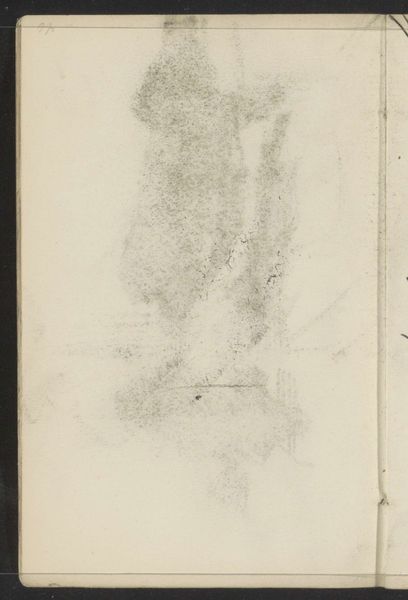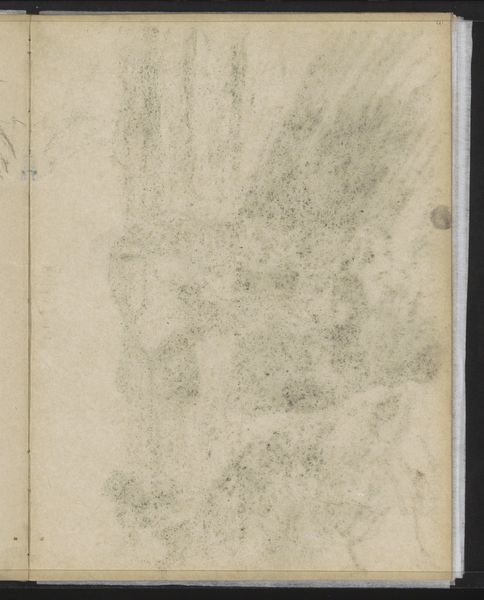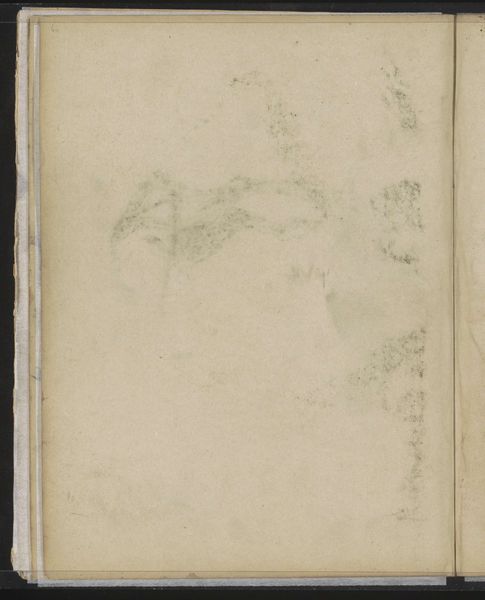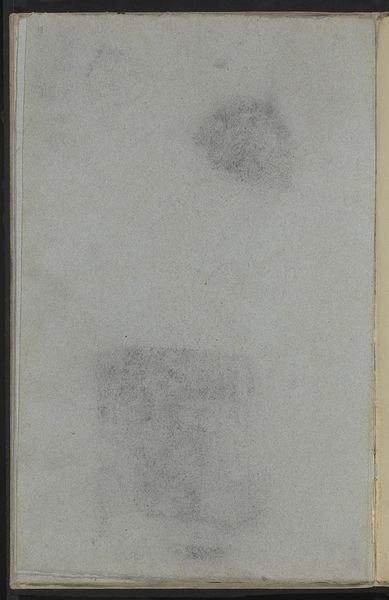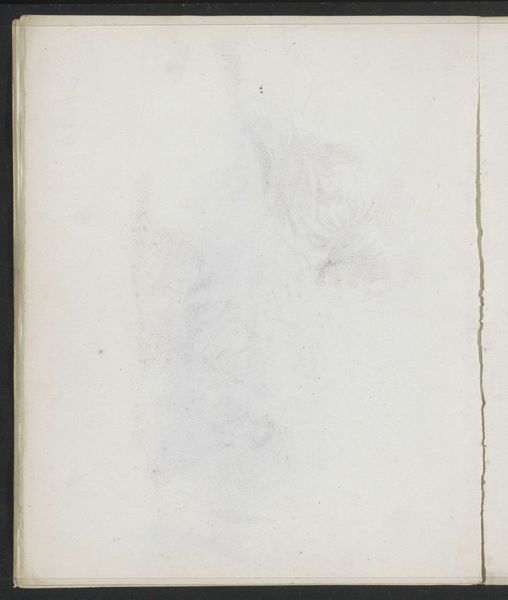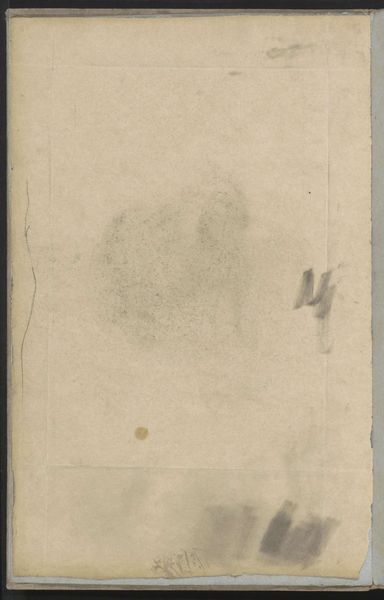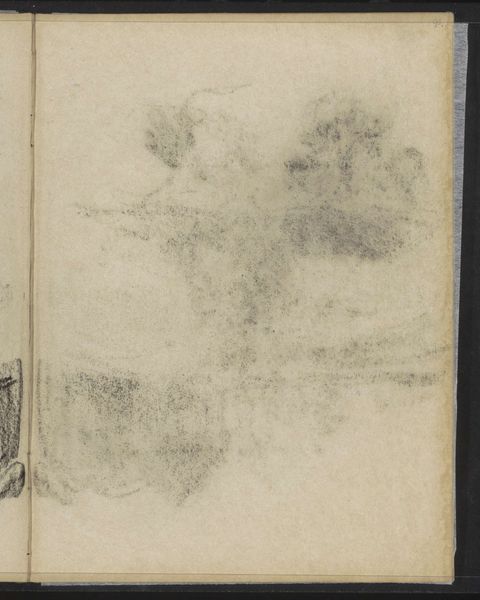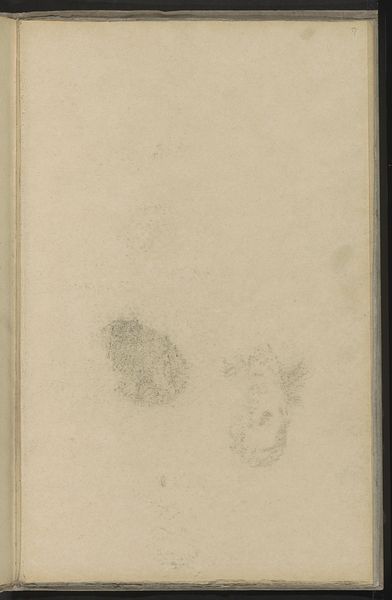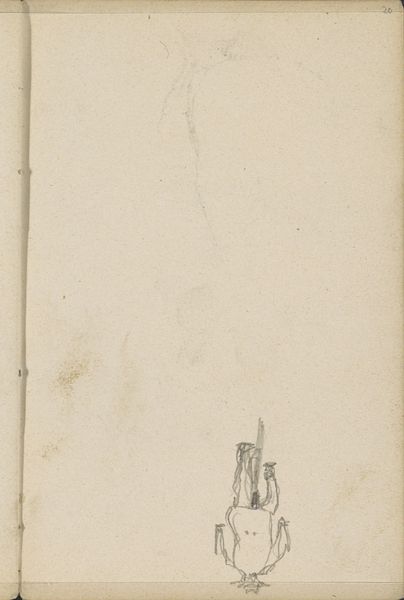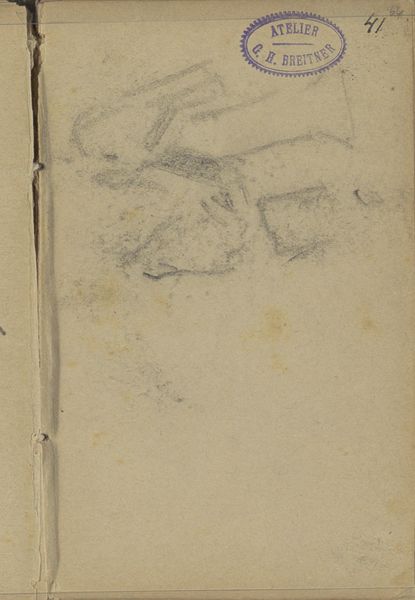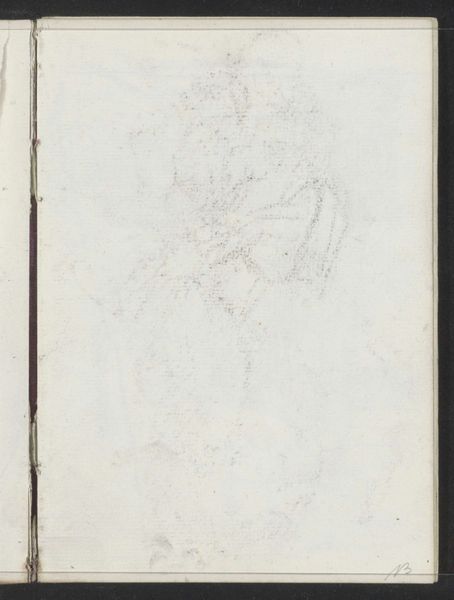
drawing, paper, graphite
#
drawing
#
impressionism
#
landscape
#
paper
#
graphite
Copyright: Rijks Museum: Open Domain
Curator: This work by Willem Witsen, titled "Abklatsch van de krijttekening op pagina 71," which translates to "Rubbing of the chalk drawing on page 71," dates from around 1886 to 1891. It's currently held here at the Rijksmuseum. Editor: My first impression is one of sparseness and quiet. It almost feels like a forgotten fragment from an artist's sketchbook, quickly jotted down and then largely erased from memory. Curator: Precisely. Witsen was deeply involved in artistic circles in the Netherlands, and his social position granted him certain freedoms to experiment. Drawings like this offered an intimacy with a more private creative process, absent from larger public works. It suggests the quietude he could grasp amidst his society engagements. Editor: The materials really speak to me – graphite on paper. Simple, direct, accessible. There’s an almost democratic feel to it, stripping away the pretense and ceremony of the art world, getting down to bare essentials. Curator: These studies, almost fleeting impressions, are of note in their association with the broader impressionist movement of the period, reflecting his milieu. The light and airy feel hint at the wider context of European landscape art in his circle. It makes one think about how artistic collaboration takes place within studios or workshops, doesn’t it? Editor: Definitely. There’s a ghostliness to the marks left here – literally, a rubbing. It reveals the layered processes by which artworks come into existence. It reminds us of the labor, even in something this seemingly slight. Curator: For viewers today, that layering also presents interesting challenges. How much are we meant to “read” into what’s visibly sketched, and how much is informed by the knowledge that this is itself a copy or "rubbing?" Is it meant to direct our attention towards something else, or something deeper within this intimate process of creation itself? Editor: And it points to the social relationships inherent in artistic production – Witsen as part of the milieu as you suggest and the labor of potentially making the 'original' then taking this chalk drawing in a further step in terms of representation.. This simple piece starts conversations about class, industry, and the value we ascribe to art as labor! Curator: It seems we both agree this piece, in its own way, holds unexpected richness within what initially appears so simple. Editor: Yes, definitely much more going on here upon closer looking.
Comments
No comments
Be the first to comment and join the conversation on the ultimate creative platform.
